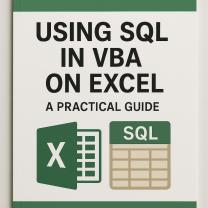Why is Google Translate not accurate?
Google Translate is a widely used machine translation tool that has made significant advancements in recent years, but it still has limitations that can result in inaccuracies in translation. Here are some key reasons why Google Translate may not always provide accurate translations:
Complexity of Language: Language is incredibly complex, with nuances, idioms, cultural references, and context-specific meanings. Google Translate relies on statistical and rule-based methods, which may not fully capture the intricacies and subtleties of languages.
Lack of Context: One of the most significant limitations is the lack of context understanding. Google Translate translates each text snippet in isolation, without fully grasping the broader context of a conversation or document. This can lead to misinterpretations, especially in languages with different word orders or grammatical structures.
Idioms and Cultural Nuances: Idioms and cultural expressions don't always translate directly or accurately. Google Translate may not recognize idiomatic phrases or cultural references, resulting in translations that sound unnatural or confusing.
Ambiguity: Many words and phrases have multiple meanings depending on context. Google Translate might choose the most common meaning, which may not be the correct one in a specific context.
Language Pairs: Google Translate's accuracy can vary depending on the language pair being translated. It is generally more accurate for widely spoken languages and less accurate for languages with limited training data.
Syntax and Grammar: While Google Translate can handle basic grammar and syntax, it can struggle with more complex sentence structures, especially in languages with different grammatical rules.
Proper Nouns and Technical Terms: Proper nouns, names, and specialized technical terminology may not always be translated accurately. Google Translate may not recognize them or might provide a phonetic translation instead.
Language Evolution: Languages evolve over time, and Google Translate's algorithms may not always keep up with these changes, leading to outdated or less accurate translations.
Homophones: Languages like English have many homophones (words that sound the same but have different meanings). Google Translate may select the wrong homophone in a given context.
User Errors: Sometimes, inaccuracies can occur due to user errors, such as misspellings or incorrect input.
Privacy Concerns: Google Translate processes text input on its servers, which raises privacy concerns for sensitive or confidential content.
While Google Translate can be a helpful tool for getting the gist of a text or for basic communication, it is not a substitute for professional human translators, especially in situations where accuracy, nuance, and context are crucial. For critical documents, official translations, or nuanced conversations, it's always advisable to seek the assistance of a human translator who can provide a more accurate and culturally sensitive translation.
The Accuracy Challenge: Why Google Translate Falls Short
Google Translate is a powerful tool that can translate text into over 100 languages. However, it is important to note that Google Translate is not perfect, and it can sometimes produce inaccurate translations.
There are a number of factors that can contribute to the inaccuracy of Google Translate, including:
- The complexity of language: Language is a complex system, and it can be difficult for machines to understand all of the nuances of human language. For example, Google Translate may have difficulty translating idioms, metaphors, and other figurative language.
- The lack of context: Google Translate does not have access to the same context as a human translator. This can lead to inaccurate translations, especially for texts that are ambiguous or contain technical language.
- The size and quality of the training data: Google Translate is trained on a massive dataset of text and code. However, the quality of this data can vary, and this can lead to inaccurate translations.
Lost in Translation: The Limitations of Google Translate
Google Translate can be a useful tool for translating simple texts, but it is important to be aware of its limitations. For more complex texts, it is best to use a human translator.
Here are some specific examples of the limitations of Google Translate:
- Google Translate may have difficulty translating idioms, metaphors, and other figurative language. For example, the English idiom "to spill the beans" might be translated into Spanish as "tirar los frijoles," which literally means "to throw the beans." However, this is not a natural-sounding translation in Spanish.
- Google Translate may also have difficulty translating texts that are ambiguous or contain technical language. For example, the English sentence "The engineer adjusted the valve" could be interpreted in a number of ways, depending on the context. Google Translate may not be able to choose the correct translation without additional information.
- Google Translate may also produce inaccurate translations if the training data is of poor quality. For example, if Google Translate is trained on a dataset of text that contains many errors, it is likely to produce translations that contain the same errors.
Translation Woes: The Factors Behind Google Translate's Inaccuracy
The factors that contribute to the inaccuracy of Google Translate can be divided into two categories:
- Linguistic factors: These factors include the complexity of language, the lack of context, and the ambiguity of language.
- Technological factors: These factors include the size and quality of the training data, and the limitations of machine learning algorithms.
Google Translate is constantly being improved, and it is likely to become more accurate in the future. However, it is important to be aware of its limitations and to use it with caution.
Here are some tips for using Google Translate more effectively:
- Use Google Translate for simple texts, such as short sentences and paragraphs.
- Avoid using Google Translate for complex texts, such as technical documents and literary works.
- If you are unsure about the accuracy of a translation, check it with a human translator.
Google Translate can be a useful tool, but it is important to be aware of its limitations and to use it with caution.













